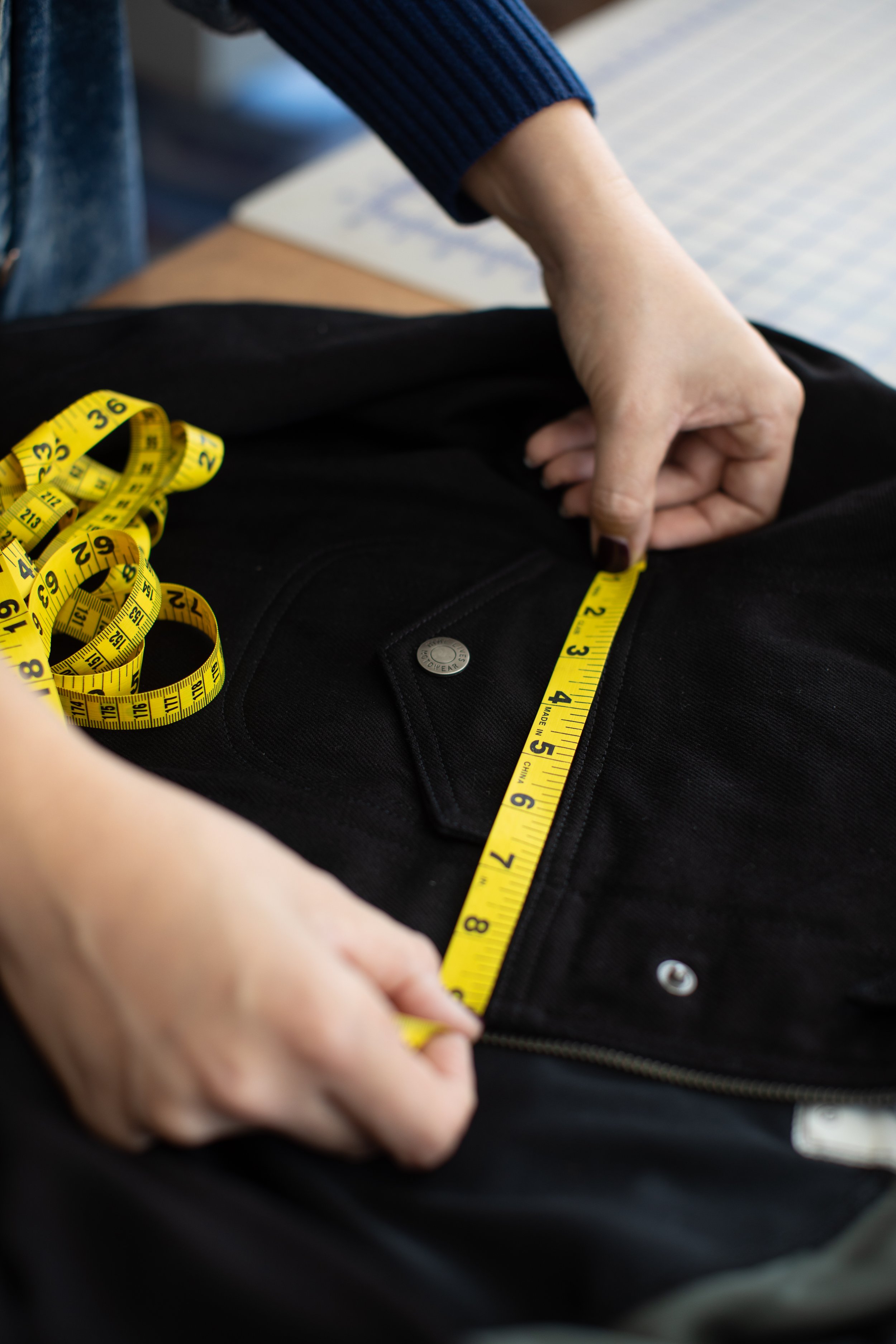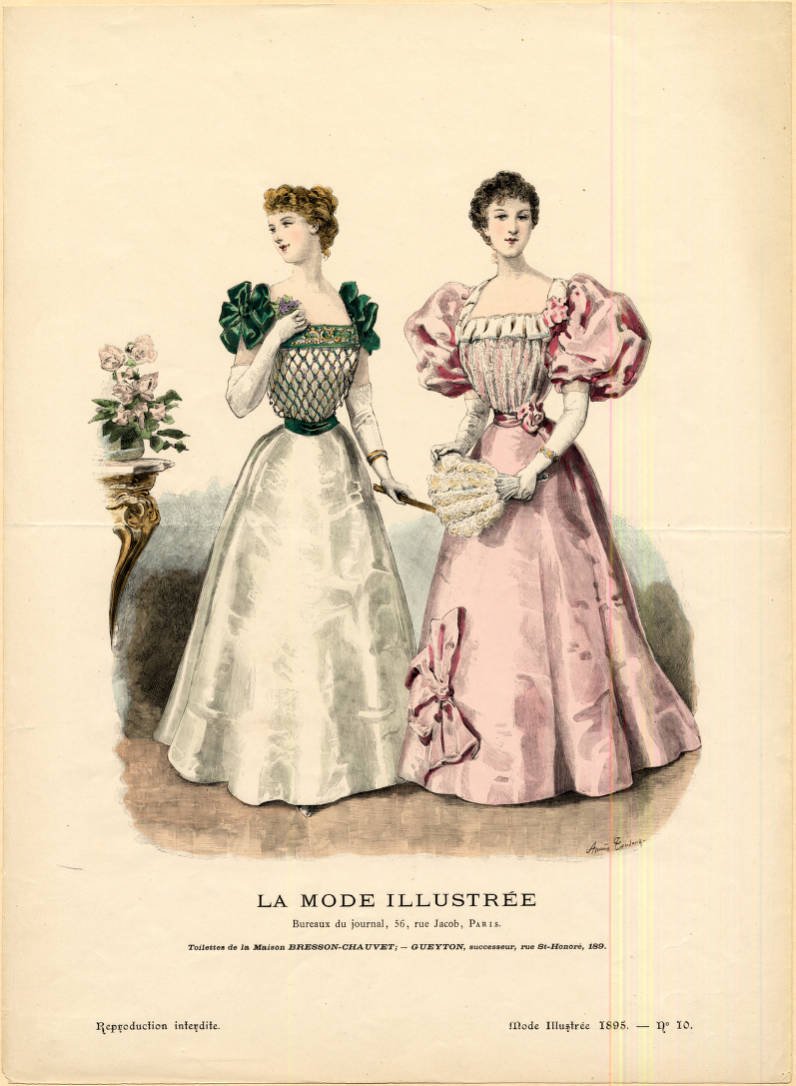A Brief History of Ready to Wear is a 4-part feature exploring the events that led from made-to-order fashion, through the ready to wear revolution, and up to the present problem of fast fashion.
Fashion is an international market of art, an exchange of inspiration, ideas, and industry.
While humans have always adorned ourselves in an act of self-expression, we have not always bought off the rack or shopped online. Fashion wasn’t always fast. In order to understand all of the complexities of the fashion world today, and the greater forces that shape our manner and means of consumption, it is important to understand how our garments come to life.
Production Terms
We began to explore the foundations of sizing in our first installment of A Brief History of Ready to Wear, with the introduction of standard sizing. The standardized sizing in the fashion industry has a complicated history, so before we dig deeper, let’s revisit and highlight a few key terms.
Straight Sizing - Also known as “standard sizes” (ex. from XXS to XXL) are used by manufacturers to streamline the production process and allow for faster production of what the industry considers to be the average or most common sizes. However, straight sizing is limiting and excludes a majority of American women, 68% of whom wear a size 14 or above.
Size Inclusive - A collection of clothes is designed to fit and include a wide range of sizes and body types, rather than segregating extended sized garments into separate collections.
Plus Size - At a glance, plus size refers to sizes larger than straight or standard sizes. The fashion industry generally considers size 18 and above “plus sized”. Though for some brands, plus size departments begin at size 12, size 14, or XL.
Mass-Produced - This is the production of large quantities of a standardized article by an automated and fast paced mechanical process, often producing items by the hundreds or thousands.
Bespoke Tailoring - A practice much more popular and commonplace in years past, bespoke tailoring is the process of making clothing to an individual’s specifications and measurements.
One size fits all?
Standardized sizing goes all the way back to the beginning of shopping as we know it. Once clothing stopped predominantly being locally made for individuals, and instead was being mass-produced for the market at large, designers and brands needed a way to produce garments on a recognizable scale to fit a wide range of consumers. This was the wild west of fashion, there was no reference for how to fit everyone. Even though there is no average body shape or size, that didn’t stop fashion from trying.
The U.S. started seeing manufactured “standard sized” menswear as early as 1850, but the women’s market showed a consistent preference for custom clothing into the early 20th century. Dresses, blouses, and other garments up to the 1910’s involved many more pattern pieces and were much more fitted than the suit jackets and trousers men wore at the time. During this moment in history, some tailors experimented with offering ready to wear garments, but these pieces still required additional tailoring to fit the buyer following a purchase. The additional cost of tailoring pre-made pieces meant the final prices weren’t much different than those of custom made to order garments.
Fashion trends continued to evolve, and the American fashion industry sought a solution to streamline production. Winnifred Aldrich, author of Metric Pattern Cutting for Women’s Wear, claims that the most driving factor for this change was the more relaxed fit of women’s clothing at the turn of the century.
You can see the difference between these two styles from 1895 and 1913, the cinched waist and corseted fit was traded for a more relaxed and cylindrical style. This evolution continued through out the early half of the 20th century, leading to the more recognizable silhouettes of the 1930s when standardized sizing began to be explored.
Since the foundational structure of fashion for women had shifted, crafting ready to wear garments became more possible, fueling the need for standard sizing. Two statisticians, Ruth O’Brien and William Shelton set out to answer: What size is the average American woman?
They were supported by the U.S. Department of Agriculture to conduct a study from 1939 to 1941, collecting data and creating generalized averages. They collected data from 15,000 women and processed all the information by hand.
The study failed to measure a sizable cross section of women for a variety of reasons. The majority of participants were poor working class women who needed the participation fee, and so the average size of those women were much slimmer than many other “average” Americans. Despite measuring women in 59 places on the body, and including measurements for both sitting and standing, the final results were focused on primarily bust and presumed proportions reflecting an hourglass figure.
Did You Know: Sizes for children and teens used to be based on age? So a size 16 was meant to fit the average 16 year old! Age is not a clear indicator of size, just as a bust measurement is not a complete gauge for the full female figure.
This wasn’t the only study of its kind. In 1958, a standardized metric reanalyzed the data and was supplemented by measurements of women who served in WWII, some of the most athletic and fit women in the country. These additional attempts to better understand the sizing of the average American woman were supported by the Nation Department of Standards, as garment production was already a massive industry in the United States. These research efforts attempted to better serve consumers and regulate the industry as a whole, promoting efficacy as well as profits.
There is no Size 0.
Following this new study, sizes ranged from 8 to 38, with different indicators for length - Tall (T), Regular (R), and Short (S). A plus or minus sign was also listed to indicate girth. This system was enforced on garment patterns. At first, mail order brands were enthusiastic, as standard sizing and their relative size charts could be featured in catalogs. These regulations also removed the cost of tailoring and alteration, making fashion trends more accessible to a wider audience of consumers.
However, the enthusiasm for an industry size standard didn’t last long. By 1970, the National Department of Standards no longer enforced the original Commercial Standard. They first retitled the metrics as a Voluntary Product Standard and finally removed the standards entirely in 1983. With this national guideline of standard sizing withdrawn, brands began to create their own sizing systems. This led to the introduction of vanity sizing.
Vanity Sizing: When a clothier intentionally marks a garment as a smaller size than it actually is, to help the wearer feel more slim and confident in the brand’s clothes.
“In 1958, for example, a size 8 corresponded with a bust of 31 inches, a waist of 23.5 inches and a hip girth of 32.5 inches. In ASTM’s 2008 standards, a size 8 had increased by five to six inches in each of those three measurements, becoming the rough equivalent of a size 14 or 16 in 1958… We can see size inflation happening over shorter time spans as well. A size 2 in the 2011 ASTM standard falls between a 1995 standard size 4 and 6.” - Slate Magazine
Vanity sizing is ever present today, as every brand has their own size system. While you might struggle to fit a size 10 in one store, you can find a size 8 too big in another. This can make shopping dizzying and frustrating. While in-store shopping offers a dressing room, online stores have easily accessible size charts. With a size chart, you are able to reference the exact measurements of the garment or body associated with a particular size, and better place yourself within the context of the brand, rather than guessing or marking assumptions.
In the end, it is so important to remember that there is no average size, proportion, or standard for our bodies, and there never will be!
At Rule DD, we encourage our clients to create sizing that is most compatible with their audience. Poppy Row and Reprise Activewear worked together to explore size inclusivity across their brands in an award-winning collaboration.
Is there a solution?
Bodies change! Learning to take your own body measurements and how to read a size chart are your best bet for ensuring the clothes you are shopping for will fit. Additionally, regularly reviewing your wardrobe, and your measurements, is a good way to stay informed. If you find that a piece of clothing no longer fits, it might be time to either alter it or pass it on - ultimately, the choice is yours!





